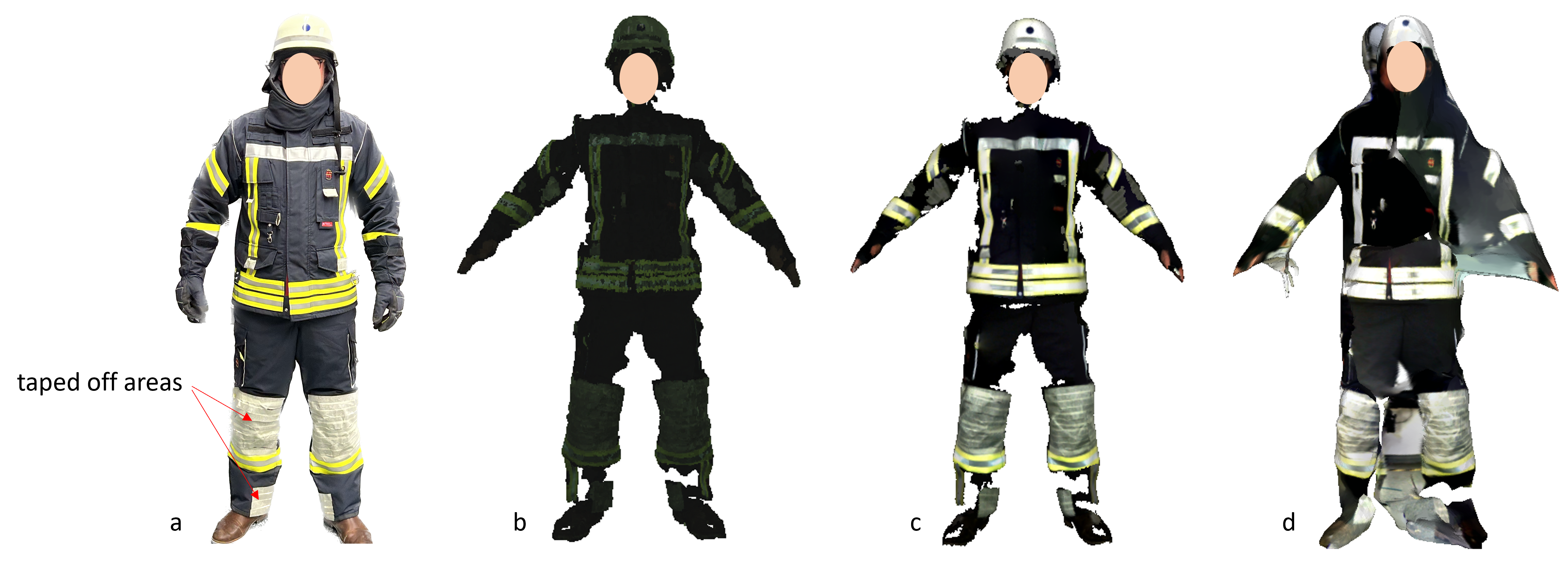Potential and challenges of high-speed (4D) body scanning for mobility analysis of firefighter clothing
a methodical case study
DOI:
https://doi.org/10.17179/excli2023-6101Keywords:
highspeed body scanning, motion comfort, automated analysis, protective clothing, firefighter clothing, 4D-scanningAbstract
In this study, protective clothing for firefighters is analyzed using 4D body scanning and 3D hand scanning, with a focus on the experimental analysis of ergonomic comfort. In particular, German firefighting clothing is examined to discuss the possibilities and limitations of current scanning technologies for capturing firefighting clothing. For this purpose, various movements are recorded in the 4D scanner. In addition, a method for determining position changes of protective clothing at identified limits is presented. The initial results illustrated that the analysis of protective clothing for firefighters using 4D scanning is problematic due to specific materials, reflections, and surface properties. Improvements in the scanning process and optimization of algorithms are required to achieve more detailed and precise results. Concerning the ergonomic comfort related to the mobility under firefighting clothing use conditions, this methodical case study highlights the limits of current approaches, with a focus on the limitations of 4D scanning and potential improvements.

Downloads
Published
How to Cite
License
Copyright (c) 2023 Dominik Muenks, Yordan Kyosev, Felix Kunzelmann

This work is licensed under a Creative Commons Attribution 4.0 International License.
Authors who publish in this journal agree to the following terms:
- The authors keep the copyright and grant the journal the right of first publication under the terms of the Creative Commons Attribution license, CC BY 4.0. This licencse permits unrestricted use, distribution and reproduction in any medium, provided that the original work is properly cited.
- The use of general descriptive names, trade names, trademarks, and so forth in this publication, even if not specifically identified, does not imply that these names are not protected by the relevant laws and regulations.
- Because the advice and information in this journal are believed to be true and accurate at the time of publication, neither the authors, the editors, nor the publisher accept any legal responsibility for any errors or omissions presented in the publication. The publisher makes no guarantee, express or implied, with respect to the material contained herein.
- The authors can enter into additional contracts for the non-exclusive distribution of the journal's published version by citing the initial publication in this journal (e.g. publishing in an institutional repository or in a book).





